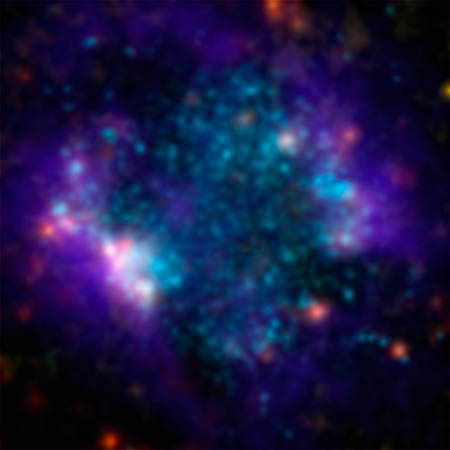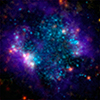GALEX Image

Sluggish Galaxy Grows Stars Slowly
A small galaxy, called Sextans A, is shown here in a multi-wavelength mosaic captured by the European Space Agency's Herschel mission, in which NASA is a partner, along with NASA's Galaxy Evolution Explorer (GALEX) and the National Radio Astronomy Observatory's Jansky Very Large Array observatory near Socorro, New Mexico. The galaxy is located 4.5 million light-years from Earth in the Sextans constellation.
The environment in this galaxy is similar to that of our infant universe because it lacks in heavy metals, or elements heavier than hydrogen and helium. Heavy metals act in some ways like fertilizers for stars, helping them form and grow. Scientists study galaxies like Sextans A to learn how stars still manage to slowly bloom under these poor-growing conditions. The research provides a better understanding of how the very first stars in our universe came to be.
In this image, the purple shows gas; blue shows young stars and the orange and yellow dots are newly formed stars heating up dust.
Credit: ESA/NASA/JPL-Caltech/NRAO
Release Date
October 15, 2014
Download Options

- Full Resolution TIFF [1560x1560, 2.1 MB]
- Full Resolution JPEG [1560x1560, 328 KB]
- Screen Resolution JPEG [450x450, 127 KB]